Related Research Articles

The Mariana and Palau Islands campaign, also known as Operation Forager, was an offensive launched by United States forces against Imperial Japanese forces in the Mariana Islands and Palau in the Pacific Ocean between June and November 1944 during the Pacific War. The United States offensive, under the overall command of Chester W. Nimitz, followed the Gilbert and Marshall Islands campaign and was intended to neutralize Japanese bases in the central Pacific, support the Allied drive to retake the Philippines, and provide bases for a strategic bombing campaign against Japan.

Holland McTyeire "Howlin' Mad" Smith, KCB was a general in the United States Marine Corps during World War II. He is sometimes called the "father" of modern U.S. amphibious warfare. His nickname, "Howlin' Mad" Smith, had been given to him by his troops in the Dominican Republic in 1916.
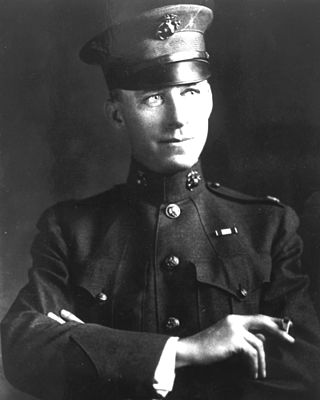
Lieutenant Colonel Earl Hancock "Pete" Ellis was a United States Marine Corps Intelligence Officer, and author of Operations Plan 712: Advanced Base Operations in Micronesia, which became the basis for the American campaign of amphibious assault that defeated the Japanese in World War II.

Amphibious warfare is a type of offensive military operation that today uses naval ships to project ground and air power onto a hostile or potentially hostile shore at a designated landing beach. Through history the operations were conducted using ship's boats as the primary method of delivering troops to shore. Since the Gallipoli Campaign, specialised watercraft were increasingly designed for landing troops, material and vehicles, including by landing craft and for insertion of commandos, by fast patrol boats, zodiacs and from mini-submersibles. The term amphibious first emerged in the United Kingdom and the United States during the 1930s with introduction of vehicles such as Vickers-Carden-Loyd Light Amphibious Tank or the Landing Vehicle Tracked.

Joint Expeditionary Base–Little Creek (JEB–LC), formerly known as Naval Amphibious Base Little Creek and commonly called simply Little Creek, is the major operating base for the Amphibious Forces in the United States Navy's Atlantic Fleet. The base comprises four locations in three states, including almost 12,000 acres (4,900 ha) of real estate. Its Little Creek location in Virginia Beach, Virginia, totals 2,120 acres (860 ha) of land. Outlying facilities include 350 acres (140 ha) located just north of Training Support Center Hampton Roads in Virginia Beach and 21 acres (8.5 ha) known as Radio Island at Morehead City, North Carolina, used for U.S. Coast Guard ships and personnel as well as serves as an amphibious embarkation/debarkation area for U.S. Marine Corps units at Marine Corps Base Camp Lejeune, North Carolina. It is also home to the Naval School of Music.

The Battle of Tinian was a battle of the Pacific campaign of World War II, fought on the island of Tinian in the Mariana Islands from 24 July until 1 August 1944. The 8,000-man Japanese garrison was eliminated, and the island joined Saipan and Guam as a base for the Twentieth Air Force.

The Battle of Guam was the American recapture of the Japanese-held island of Guam, a U.S. territory in the Mariana Islands captured by the Japanese from the United States in the First Battle of Guam in 1941 during the Pacific campaign of World War II. The battle was a critical component of Operation Forager. The recapture of Guam and the broader Mariana and Palau Islands campaign resulted in the destruction of much of Japan's naval air power and allowed the United States to establish large airbases from which it could bomb the Japanese home islands with its new strategic bomber, the Boeing B-29 Superfortress.
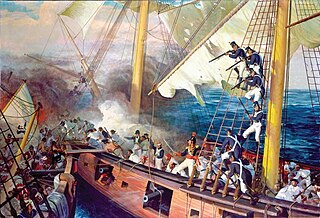
Marines, or naval infantry, are typically a military force trained to operate in littoral zones in support of naval operations. Historically, tasks undertaken by marines have included helping maintain discipline and order aboard the ship, the boarding of vessels during combat or capture of prize ships, and providing manpower for raiding ashore in support of the naval objectives. In most countries, the marines are an integral part of that state's navy.

The Solomon Islands campaign was a major campaign of the Pacific War of World War II. The campaign began with Japanese landings and capture of several areas in the British Solomon Islands and Bougainville, in the Territory of New Guinea, during the first six months of 1942. The Japanese occupied these locations and began the construction of several naval and air bases with the goals of protecting the flank of the Japanese offensive in New Guinea, establishing a security barrier for the major Japanese base at Rabaul on New Britain, and providing bases for interdicting supply lines between the Allied powers of the United States and Australia and New Zealand.

The history of the United States Marine Corps (USMC) begins with the founding of the Continental Marines on 10 November 1775 to conduct ship-to-ship fighting, provide shipboard security and discipline enforcement, and assist in landing forces. Its mission evolved with changing military doctrine and foreign policy of the United States. Owing to the availability of Marine forces at sea, the United States Marine Corps has served in nearly every conflict in United States history. It attained prominence when its theories and practice of amphibious warfare proved prescient, and ultimately formed a cornerstone of U.S. strategy in the Pacific Theater of World War II. By the early 20th century, the Marine Corps would become one of the dominant theorists and practitioners of amphibious warfare. Its ability to rapidly respond on short notice to expeditionary crises has made and continues to make it an important tool for U.S. foreign policy.
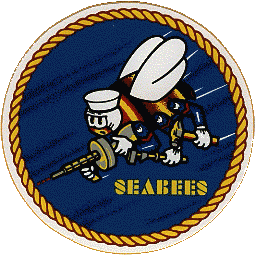
When World War II broke out the United States Naval Construction Battalions (Seabees) did not exist. The logistics of a two theater war were daunting to conceive. Rear Admiral Moreell completely understood the issues. What needed to be done was build staging bases to take the war to the enemy, across both oceans, and create the construction force to do the work. Naval Construction Battalions were first conceived at Bureau of Yards and Docks (BuDocks) in the 1930s. The onset of hostilities clarified to Radm. Moreell the need for developing advance bases to project American power. The solution: tap the vast pool of skilled labor in the U.S. Put it in uniform to build anything, anywhere under any conditions and get the Marine Corps to train it. The first volunteers came skilled. To obtain these tradesmen, military age was waived to age 50. It was later found that several past 60 had managed to get in. Men were given advanced rank/pay based upon experience making the Seabees the highest paid group in the U.S. military. The first 60 battalions had an average age of 37.
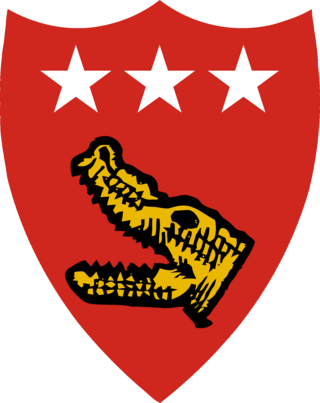
The V Amphibious Corps (VAC) was a formation of the United States Marine Corps which was composed of the 3rd, 4th and 5th Marine Divisions in World War II. The three divisions were the amphibious landing force for the United States Fifth Fleet with two goals, removal of Japanese forces from islands so U.S. Seabees could build advance bases to project US power. In doing this VAC was notably involved in the battles for Tarawa, Saipan, and Iwo Jima. V Amphibious Corps was commanded by General Holland 'Howlin Mad' Smith followed by General Harry Schmidt.
The United States Marine Corps's Advanced Base Force was a coastal and naval base defense force that was designed to set up mobile and fixed bases in the event of major landing operations within, and beyond, the territorial United States. Established in the beginning of the 20th century, the Advanced Base Force was the United States' first combined task force built on the concept of the Marine Corps' traditional role in expeditionary warfare. The slow development of the advanced base force played a significant role in the controversy over the removal of the ships' guards in 1908–1909.
The Fleet Landing Exercises, or FLEX were amphibious landing exercises conducted by the United States Navy and United States Marine Corps between 1935 and 1941. The purpose of these exercises was to formulate a workable amphibious warfare doctrine. The development of the necessary craft and other equipment, and the proper tactical deployment of them were also results. Finally, the exercises demonstrated the usefulness of a standing body of Marines, the Fleet Marine Force, specially prepared for amphibious expeditions.
The Observer Group was a joint-United States Army/Marine Corps unit that was the first in the United States and Fleet Marine Force to be organized and trained specifically for amphibious reconnaissance. The Observer Group experimented in the methodology and equipment for projecting reconnaissance from the sea before the establishment of the OSS Maritime Unit, the Underwater Demolition Teams, and before the Army Special Forces and Air Commandos. It was also the birth of naval amphibious intelligence.

Amphibious reconnaissance is ground and naval reconnaissance in the littoral area bordering coastal or ocean areas. Initially, it is used for preliminary reconnaissance in collecting pertinent information about the beachhead in its permeability and usability for main landing assaults. Specialized recon patrols skilled in boatswain and combatant diving using either amphibious vehicles or rubber crafts to obtain and collect information on the enemy, the topology ashore and inland, and hydrographic surveys for underwater obstacles and mines, and for the purpose of affecting a deception.
The reconnaissance mission within the United States Marine Corps is divided into two distinct but complementary aspects; Marine Division Recon and Force Reconnaissance.
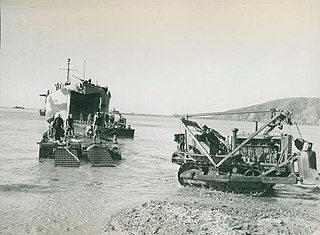
Amphibious Training Base (ATB)(USNATB) Advance Amphibious Training Base are United States Armed Forces Bases used for the training of amphibious warfare. Starting with World War II, United States Navy began large-scale amphibious assaults of beaches. To train troops in the use of Amphibious warfare ships and Amphibious Combat Vehicles the Navy established training bases both on the US mainland and overseas at US Naval Advance Bases. The Training involved the United States Navy working with The United States Marine Corps, United States Army and in later years sometimes the United States Air Force for air support.
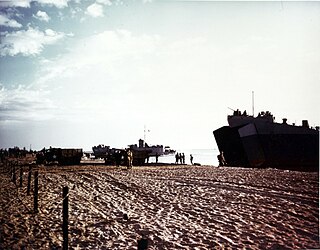
Naval Amphibious Training Base Solomons also called Naval Amphibious Training Base Solomons Island was a US Amphibious Training Base at Solomons, Maryland on the Dowell Peninsula from 1942 to 1945 built to train troops for World War II amphibious warfare. Naval Amphibious Training Base Solomons was the United States's first official naval amphibious training base, it was established in August 1942 on the Patuxent River, called: USNATB, United States Navy Amphibious Training Base. The base closed April 1945 after training 67,698 troops.
References
- ↑ Bern Anderson, By Sea and by River: The Naval History of the Civil War, 1962; Chap.4, pg. 46
- 1 2 3 Allan R. Millett, Semper Fidelis: The History of the United States Marine Corps, (New York City, NY: The Free Press, 1991).
- ↑ Paul Carano and Pedro C. Sanchez, A Complete History of Guam, (Rutland, VT: C. E. Tuttle Co., 1964).
- ↑ William M. McBride, Technological Change and the United States Navy, 1865—1945, (Baltimore, MD: Johns Hopkins University Press, 2000).
- ↑ Floyd W. Rudmin, Bordering on Aggression: Evidence of U.S. Military Preparations Against Canada, (Nashville, TN: Voyageur Publishing Co., May 1993).
- ↑ Michael Lind, The American Way of Strategy: US Foreign Policy and the American Way of Life, (Oxford, NY: Oxford University Press, 2006)
- ↑ Seward W. Livermore, " American Naval Base Policy in the Far East", Pacific Historical Review; 13, pgs/ 113–135.
- ↑ Maj Dion Williams, Naval Reconnaissance, Instructions for the Reconnaissance of Bays, Harbors, and Adjacent Country, 1906
- ↑ Earl H. Ellis, Naval Bases; Location, Resources, Denial of Bases, Security of Advanced Bases, 1913
- ↑ Tentative Landing Operations Manual
- ↑ Dirk A. Ballendorf & Merrill L. Bartlett, Pete Ellis: An Amphibious Warfare Prophet 1880-1923, 1997